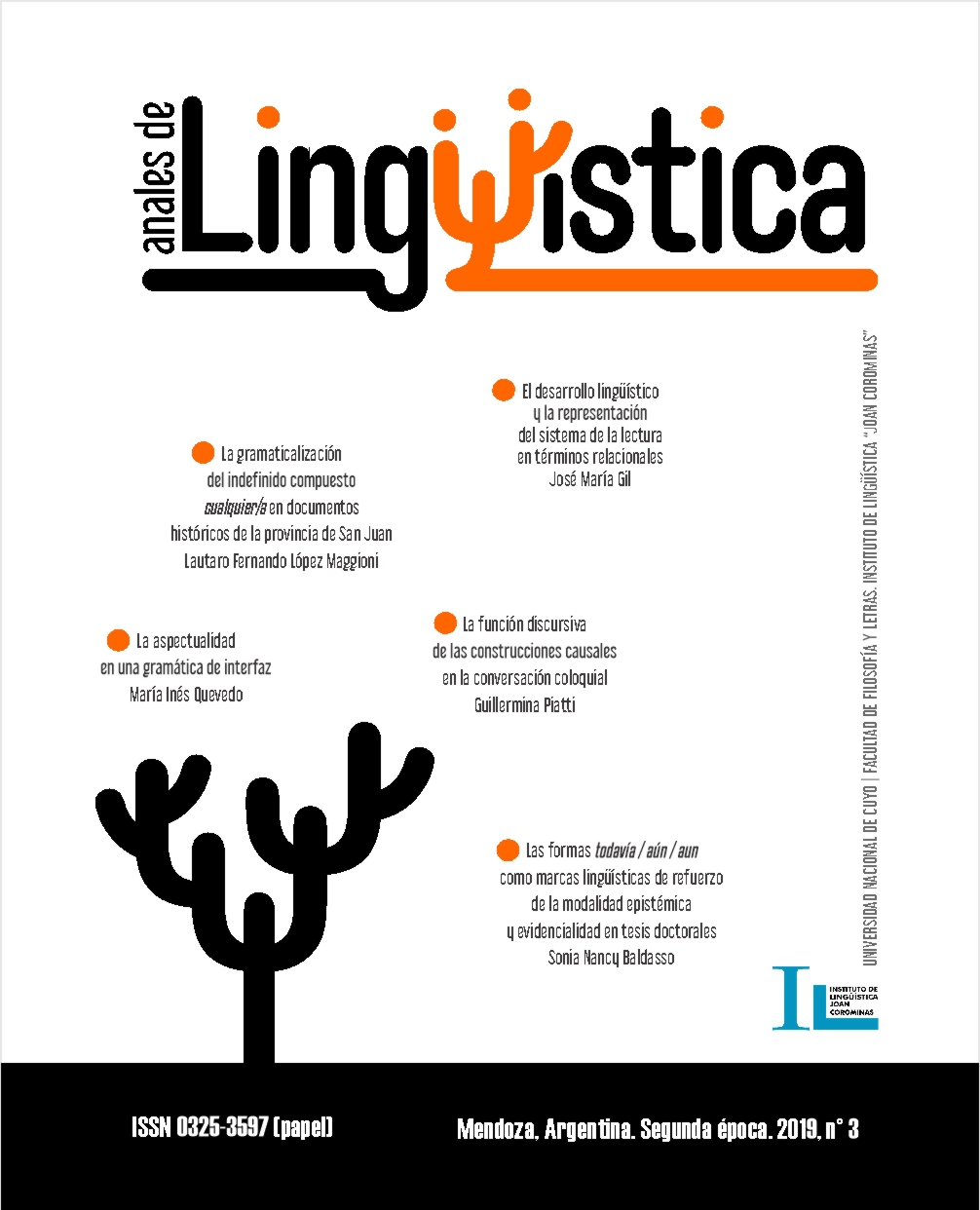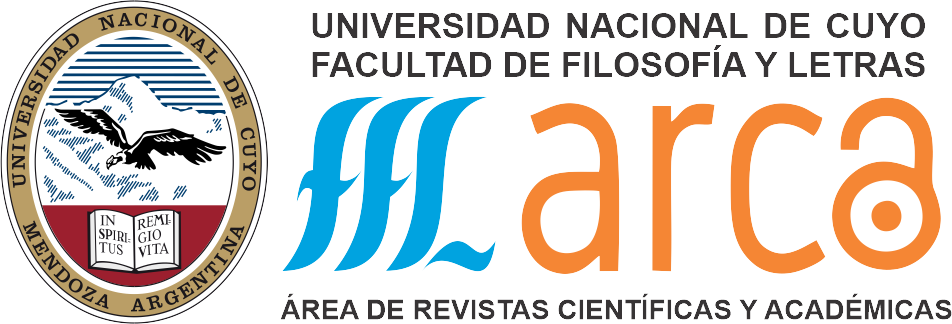Language Development and the Representation of the System of Reading in Relational Terms
Keywords:
Learning, Language, Reading, Relational Networks, BrainAbstract
This article is expected to be of special interest not only to linguists and language philosophers, but also to educators of different levels. The issues of how we learn to speak and how the reading system is represented are fundamental for those who are dedicated to language teaching, but such issues are not always explicitly characterized. The general objective of this work is to show that relational linguistics offers an explanation that is consistent with the neurological evidence of how we human beings learn to speak and, in relation to this very complex phenomenon, an explanation of how the reading system is represented in neurocognitive terms. Thanks to the relational approach, represented mainly by the work of neurolinguist Sydney Lamb, it can be understood that the development of language is not built on the basis of an innate grammar but from a proto-language, that is, a two-level system in which meanings connect directly with the means of expression, such as sounds and gestures. By the second year of life, proto-language gradually evolves towards a three-level system in which the meanings are connected to the phonological nodes by means of the lexico-grammatical nodes. On the other hand, the relational perspective also allows us to understand that the internal reading circuit is configured around the internal speech circuit.
References
Bates, E. & Goodman, J. C. (1997). On the inseparability of grammar and the lexicon: evidence form acquisition, aphasia and real time processing. Language and Cognitive Processes, 12 (5-6), 507-584.
https://doi.org/10.1080/016909697386628
Blumstein, S. E. & Amso, D. (2013). Dynamic functional organization of language: insights from functional neuroimaging. Perspectives on Psychological Science, 8 (1), 44-48. https://doi.org/10.1177/1745691612469021.
Brandt, S., Diessel, H. & Tomasello, M. (2008). The acquisition of German relative clauses: A case study. Journal of Child Language, 35 (2), 325-349. https://doi.org/10.1017/S0305000907008379
Castles, A. y Coltheart, M. (2004). Is there a causal link from phonological awareness to success in learning to read?, Cognition 91(1), 77-111.
Chomsky, N. (1986). El conocimiento del lenguaje. Madrid: Alianza, 1989. Chomsky, N. (1995). The Minimalist Program. Cambridge & London: MIT Press.
Chomsky, N. (2000). On nature and language. Cambridge, EE.UU: Cambridge University Press.
Chomsky, N. (2005). Three Factors in Language Design. Linguistic Inquiry, 36 (1), 1-22. Chomsky, N. (2006). Language and Mind. Cambridge: Cambridge University Press.
Chomsky, N. (2013). Problems of projection. Lingua, 130, 33-49.
Chomsky, N. (2016). What Kinds of Creatures Are We? New York: Columbia University Press.
Courchesne, E. & Pierce, K. (2005). Brain overgrowth in autism during a critical time in development: Implications for frontal pyramidal neuron and interneuron development and connectivity. International Journal of Developmental Neuroscience, 23 (2-3), 153-170. https://doi.org/10.1016/j.ijdevneu.2005.01.003
Dehaene, S. (2009). Reading in the Brain. The Science and Evolution of a Human Invention, New York: Viking.
Dehaene-Lambertz, G., Dehaene, S. & Hertz-Pannier, L. (2002). Functional neuroimaging of speech perception in infants. Science, 298 (5600), 2013- 2015. https://doi.org/10.1126/science.1077066
Ehri, L. y Wilce, L. (1980). The influence of orthography on readers’ conceptualization of the phonemic structure of words, Applied Psycholinguistics, 1, 371-385.
Gallardo, B. y Sanmartín, J. (2005). Afasia fluente. Materiales para su estudio. Valencia: Guada.
Gibson K. R. & Petersen, A. C., eds. (2010). Brain Maturation and Cognitive Development. Oxford: Blackwell.
Giedd, J. N. & Rapoport, J. L. (2010) Structural MRI of pediatric brain development: what have we learned and where are we going? Neuron, 67 (5), 728-734. https://doi.org/10.1016/j.neuron.2010.08.040
Grassman, S. & Tomasello, M. (2007). Two-year-olds use primary sentence accent to learn new words. Journal of Child Language, 34 (3), 677- 687. https://doi.org/10.1017/S0305000907008021
Hickock, G. (2014). The Myht of Mirror Neurons: The Real Neuroscience of Communication and Cognition, Nueva York: W. W. Norton & Co.
Hjelmslev, L. (1943). Prolegómenos a una teoría del lenguaje. Madrid: Gredos, 1984
Hubel, D. and Wiesel, T. N. (1962). Receptive ï¬elds, binocular interaction and functional architecture in the cat’s visual cortex. Journal of Physiology, 160, 106-154.
Hubel, D. and Wiesel, T. N. (1968). Receptive ï¬elds and functional architecture of monkey striate cortex. Journal of Physiology, 195, 215-243.
Hubel, D. and Wiesel, T. N. (1977). Ferrier Lecture: functional architecture of Macaque Monkey visual cortex. Proceedings of the Royal Society B: Biological Sciences, 198, 1-59.
Kelly, D. J., Quinn, P. C., Slater, A. M., Lee, K. Ge, L. & Pascalis, O. (2007). The other- race effect develops during infancy: evidence of perceptual narrowing. Psychological Science, 18 (12), 1084–1089. https://doi.org/10.1111/j.1467-9280.2007.02029.x
Kuhl, P. K., Conboy, B. T., Coffey-Corina, S., Padden, D.; Rivera-Gaxiola, M. & Nelson, T. (2008). Phonetic learning as a pathway to language: new data and native language magnet theory expanded (NLM-e). Philosophical Transactions of the Royal Society B: Biological Sciences, 363 (1493), 979-1000. https://doi.org/10.1098/rstb.2007.2154
Lamb, S. M. (1999). Pathways of the Brain. The neurocognitive basis of language. Amsterdam: John Benjamins.
Lamb, S. M. (2004). Language and Reality, Londres: Continuum.
Lamb, S. M. (2005). Language and the brain: when experiments are unfeasible, you have to think harder. Linguistics and the Human Sciences, 1, 151-178. https://doi.org/10.1558/lhs.2005.1.2.151
Lamb, S. M. (2006). Being realistic, being scientific. LACUS Forum, 33, 201-209. Recuperado de: http://www.ruf.rice.edu/~lngbrain/real.pdf
Lamb, S. M. (2013). Systemic networks, relational networks, and choice. En Fontaine, L., Bartlett, T. and O’Grady, G. (eds.). Systemic Functional Linguistics. Exploring Choice, Cambridge: Cambridge University Press, 137-160.
Lamb, S. M. (2016). Linguistic structure: A plausible theory. Language Under Discussion, 4 (1), 1-37.
http://www.ludjournal.org/index.php?journal=LUD&page=article&op=view &path[]=30
Lenroot, R. K. & Giedd, J. N. (2006). Brain development in children and adolescents: insights from anatomical magnetic resonance imaging. Neuroscience & Biobehavioral Reviews, 30 (6), 718-729. https://doi.org/10.1016/j.neubiorev.2006.06.001
Majumdar, A. and Sowa, J. (2014). Quantum cognition, Web Intelligence and Intelligent Agent Technologies, 2, 1-4. https://doi.org/10.1109/WI-IAT.2014.9
Matthews, D., Lieven, E., Theakston, A., & Tomasello, M. (2006). The effect of perceptual availability and prior discourse on young children's use of referring expressions. Applied Psycholinguistics, 27(3), 403-422.
http://dx.doi.org/10.1017/S0142716406060334
Moats, L. C. (1999). Teaching reading is rocket science. Washington, DC: American Federation of Teachers.
Moats, L. C. (2000). Speech to print: Language essentials for teachers, Baltimore: Paul H. Brookes.
Penfield, W. & Roberts, L. (1959). Speech and Brain Mechanisms. Princeton: Princeton U. Press.
Pinker, S. (1994). The Language Instinct. Nueva York: Harper Perennia.
Pinker, S. (1997). How the Mind Works. Nueva York: W. W. Norton & Company. Pinker, S. (1999). Words and rules. Nueva York: Morrow Press.
Ressel V., Wilke, M., Lidzba, K., Lutzenberger, W. & Krageloh-Mann, I. (2008). Increases in language lateralization in normal children as observed using magnetoencephalography. Brain and Language, 106 (3), 167-176. http://dx.doi.org/10.1016/j.bandl.2008.01.004
Rosselli, M., Ardila, A., Matute, E. & Vélez-Uribe, I. (2014). Language Development across the Life Span: A Neuropsychological/Neuroimaging Perspective. Neuroscience Journal, 2014, 1-21. http://dx.doi.org/10.1155/2014/585237
Rizzolatti, G. y Sinigaglia, C. (2015). Curious Book on Mirror Neurons and Their Myth, The American Journal of Psychology, 128 (4), 527-531.
Saussure, F. de (1916). Curso de lingüística general. Buenos Aires: Losada, 1986. Sowa, J. (2011). Cognitive Architectures for Conceptual Structures. En Andrews, S.
Polovina, S., Hill, R. & Akhgar, B. (eds.) Conceptual Structures for Discovering Knowledge. Berlín: Springer, 35-49. Recuperado de: http://www.jfsowa.com/pubs/ca4cs.pdf
Sowa, J. (2016). The Virtual Reality of the Mind. Procedia Computer Science, 88, 139- 144. https://doi.org/10.1016/j.procs.2016.07.417
Sowell, E. R., Trauner, D. A., Gamst, A. & Jernigan, T. L. (2002). Development of cortical and subcortical brain structures in childhood and adolescence: a structural MRI study. Developmental Medicine & Child Neurology, 44 (1) 4-16. Recuperado de: https://pdfs.semanticscholar.org/7dff/0ba6bfb08cd9f680f6b81809b8eb97b 4d662.pdf
Su, P., Kuan, C. C., Kaga, K., Sano, M. & Mima, K. (2008). Myelination progression in language-correlated regions in brain of normal children determined by quantitative MRI assessment. International Journal of Pediatric Otorhinolaryngology, 72 (12), 1751-1763. https://doi.org/10.1016/j.ijporl.2008.05.017
Tomasello, M. (2003). Constructing a language: A usage-based theory of language acquisition. Cambridge, EE.UU.: Harvard University Press.
Tomasello, M. (2008). Origins of human communication. Cambridge, EE.UU.: MIT Press.
Tomasello, M. (2011). Language Development. En U. Goswami (ed.). Childhood Cognitive Development, Oxford: Blackwell, 239-257.
Werker J. F. & Tees, R. C. (2002). Cross-language speech perception: evidence for perceptual reorganization during the first year of life. Infant Behavior and Development, 25 (1), 121-133. https://doi.org/10.1016/S0163-6383(84)80022-3
Westerhausen, R, Luders, E. & Spechtetal.K. (2011). Structural and functional reorganization of the corpus allosum between the age of 6 and 8 years. Cerebral Cortex, 21 (5), 1012-1017. https://doi.org/10.1093/cercor/bhq165
Downloads
Published
How to Cite
Issue
Section
License

Esta obra está bajo una Licencia Creative Commons Atribución 2.5 Argentina.
Los/as autores/as que publican en esta revista están de acuerdo con los siguientes términos:
1. Los/as autores conservan los derechos de autor y garantizan a la revista el derecho de ser la primera publicación del trabajo bajo una licecncia Creative Commons Atribución 2.5 Argentina (CC BY 2.5 AR) . Por esto pueden compartir el trabajo con la referencia explícita de la publicación original en esta revista.
2. Anales de lingüística permite y anima a los autores a difundir la publicación realizada electrónicamente, a través de su enlace y/o de la versión postprint del archivo descargado de forma independiente.
3. Usted es libre de:
Compartir — copiar y redistribuir el material en cualquier medio o formato
Adaptar — remezclar, transformar y construir a partir del material para cualquier propósito, incluso comercialmente.












